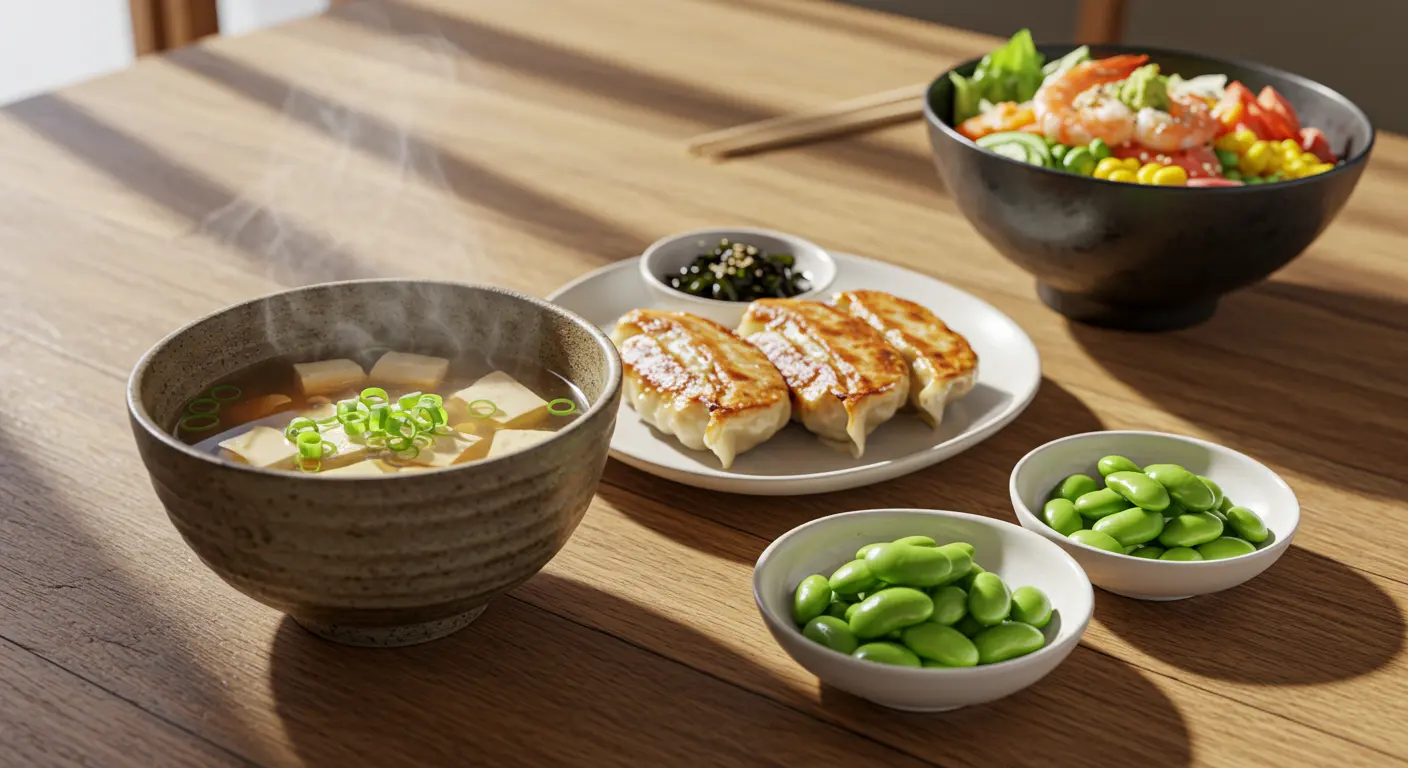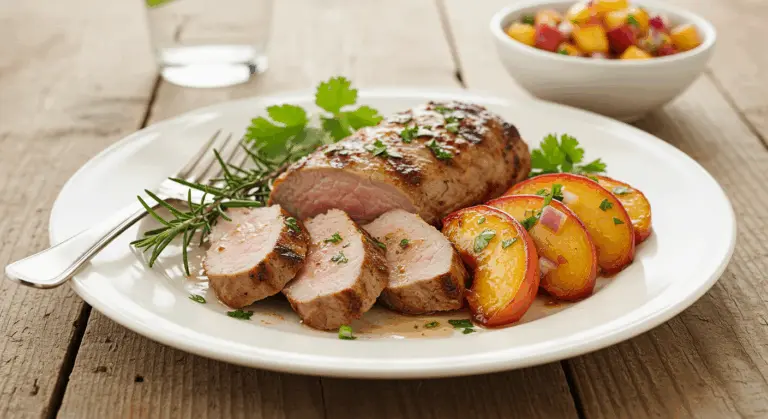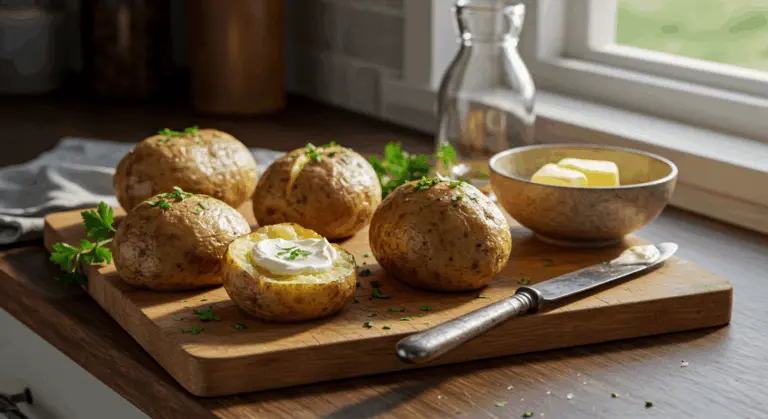What to Eat with Miso Soup – Best Side Dishes and Pairings

Understanding Miss Soup – A Japanese Comfort Food
Miss soup, or misoshiru, ranks among Japan’s most cherished culinary treasures—a soul-warming dish built upon dash, that deeply umami-rich stock that forms the backbone of Japanese cuisine. At its heart lies miss paste, a traditional seasoning created through the time-tested process of fermenting soybeans with salt and Kofi.
This soup’s remarkable quality lies in its versatility, showcased through countless regional variations, which feature different types of miss paste and additional ingredients like tofu, seaweed, or seasonal vegetables. The main paste varieties include:
-
Red Miss (aka miss): Offers a strong, robust flavor.
-
Yellow Miss (shins miss): Provides a balanced, earthy taste.
-
White Miss (shirt miss): Has a sweeter, milder profile.
Beyond its delicious taste, miss soup holds deep cultural significance as a nourishing cornerstone of Japanese dining. Whether gracing the breakfast table, accompanying lunch, or completing dinner, this fermented soup provides beneficial probiotics alongside its comforting warmth. This combination of flavor, tradition, and wellness that has made miss soup a cherished comfort food embraced far beyond Japan’s shores.
The Japanese Principle of Chimu Kansai – One Soup, Three Sides
Japanese culinary wisdom finds its expression in Chimu Kansai (one soup, three sides)—a time-honored principle that shows how miss soup weaves into the fabric of a complete, satisfying meal.
This simple formula reflects thoughtful nutritional planning: every meal should harmonize a staple (rice), soup (typically miss), and three thoughtfully chosen side dishes.
This mindful orchestration creates meals that satisfy both body and soul. The miss soup serves as more than just another dish—it becomes the unifying thread that ties flavors together, soothes digestion, and elevates the entire dining experience. Understanding this framework reveals authentic Japanese meal composition.
Best Side Dishes to Pair with Miss Soup
Choosing the perfect companions for miss soup transforms a simple bowl into a memorable culinary experience. Success depends on understanding how different flavors and textures can either complement or beautifully contrast with the soup’s distinctive umami character.
Time-tested Japanese pairings create a symphony of contrasting textures and harmonious flavors. Common choices include:
-
Steamed Rice: A neutral base that highlights the soup’s flavor.
-
Grilled Fish: Such as salmon or mackerel.
-
Amagasaki: A Japanese rolled omelet.
-
Kakemono: Various pickled vegetables.
-
Nor: Dried seaweed.
Beyond traditional pairings, Miss soup’s gentle, savory nature makes it surprisingly adaptable to modern fusion approaches. Consider these inspired combinations:
This flexibility allows miss soup can effortlessly shift roles—appearing as an elegant starter, a supporting side dish, or the cornerstone of a substantial main course. The choice is entirely yours.
Damage – A Healthy Snack Option
Few pairings are as naturally perfect as damage alongside miss soup. These vibrant young soybeans, nestled in their pods, require nothing more than a quick boil and a generous sprinkle of coarse salt to become an irresistible companion.
This pairing works so well because Both dishes share the same humble soybean ancestry, creating an almost poetic flavor connection between the lightly salted pods and the deeply savory broth.
From a nutritional standpoint, this combination provides excellent plant-based nutrition—complete proteins, abundant fiber, and essential vitamins working in perfect tandem. There’s something almost meditative about the ritual of popping beans from their pods, encouraging a slower, more mindful approach to eating.
Fried Rice – A Hearty Accompaniment
When you want to transform miss soup from a delicate appetizer into a truly satisfying meal, fried rice steps up as the perfect partner. The contrast works beautifully—chewy, flavor-packed grains meeting silky, aromatic broth in perfect harmony.
This is where you can get creative: customize your fried rice to echo the flavors dancing in your soup. Scrambled eggs, crisp vegetables, or earthy mushrooms can bridge the gap between these two dishes beautifully.
To connect the flavors, try weaving common elements throughout both dishes—a drizzle of sesame oil here, a scatter of fresh green onions there. The result? The soup’s profound umami perfectly balances the fried rice’s bold character, creating a meal that’s both comforting and completely satisfying.
Gyoza – Crispy and Flavorful
Gyoza offer wonderful textural contrast when paired with miss soup. These golden-bottomed dumplings offer a delightful interplay—crispy exteriors yielding to tender wrappers, all encasing a savory filling of ground pork or chicken, cabbage, and aromatic seasonings that complement the soup’s umami depths.
Gyoza’s appealing texture comes from its dual-cooking technique. First, they’re pan-fried until the bottoms achieve that coveted golden crispness. Then comes the steam—transforming the filling and softening the tops into silky perfection.
Traditionally accompanied by a punchy dipping sauce of soy sauce, rice vinegar, and chili oil, five to six gyoza create the ideal balance alongside your miss soup. Best of all? This restaurant-quality pairing comes together in just 30 minutes.
Quick and Easy Side Dishes for Miss Soup
Sometimes you crave the comfort of miss soup but need something quick and effortless to round out the meal. These quick options show that good food doesn’t need to be complex.
-
Steamed Rice: The classic, effortless accompaniment.
-
Origin (Rice Balls): Quickly formed from cooked rice with fillings like tuna or pickled plum.
-
Tam ago Make Johan: A simple, creamy dish of raw egg mixed into hot rice.
-
Store-Bought Sides: Pre-made options like INRI sushi, seaweed salad, kimchi, or other pickled vegetables require no prep time.
-
Quick-Pickled Cucumbers: Ready in under 10 minutes with rice vinegar, sugar, and salt.
-
Blanched Spinach (Hitachi): Takes just minutes to prepare and dress with soy sauce and sesame seeds.
With these time-saving options in your repertoire, a nourishing, well-balanced meal featuring miss soup becomes achievable even during your busiest days. Often the easiest approaches work best.
Customizing Your Miss Soup Experience
Consider miss soup your culinary starting point—endlessly adaptable and ready to reflect your personal tastes, dietary preferences, and whatever treasures you discover in your pantry or local market.
Begin by trying different miss pastes, each offering its own personality. White (shirt) miss offers mild sweetness, red (aka) miss brings robust, earthy flavors, while mixed (aware) miss strikes a harmonious middle ground.
Then add additions that make the soup uniquely yours:
-
Proteins: For a heartier soup, add thinly sliced pork, chicken, clams, or extra tofu.
-
Vegetables: Beyond traditional wakame and green onions, try shiitake mushrooms, Diego radish, carrots, or spinach.
-
Seasonal Ingredients: Keep your soup exciting with corn in the summer or kacha squash in the fall.
Finally, Choose side dishes that create perfect balance with your creation. A richly loaded miss soup calls for something light and refreshing—perhaps a crisp salad. Conversely, a delicate, minimalist version provides the perfect backdrop for heartier companions like golden tempura or glazed chicken teriyaki.
The most satisfying miss soup experience is the one that speaks to your soul. Its flexibility makes it perfect for experimentation—whether following traditional recipes or creating new combinations. The choice, as always, is deliciously yours.






